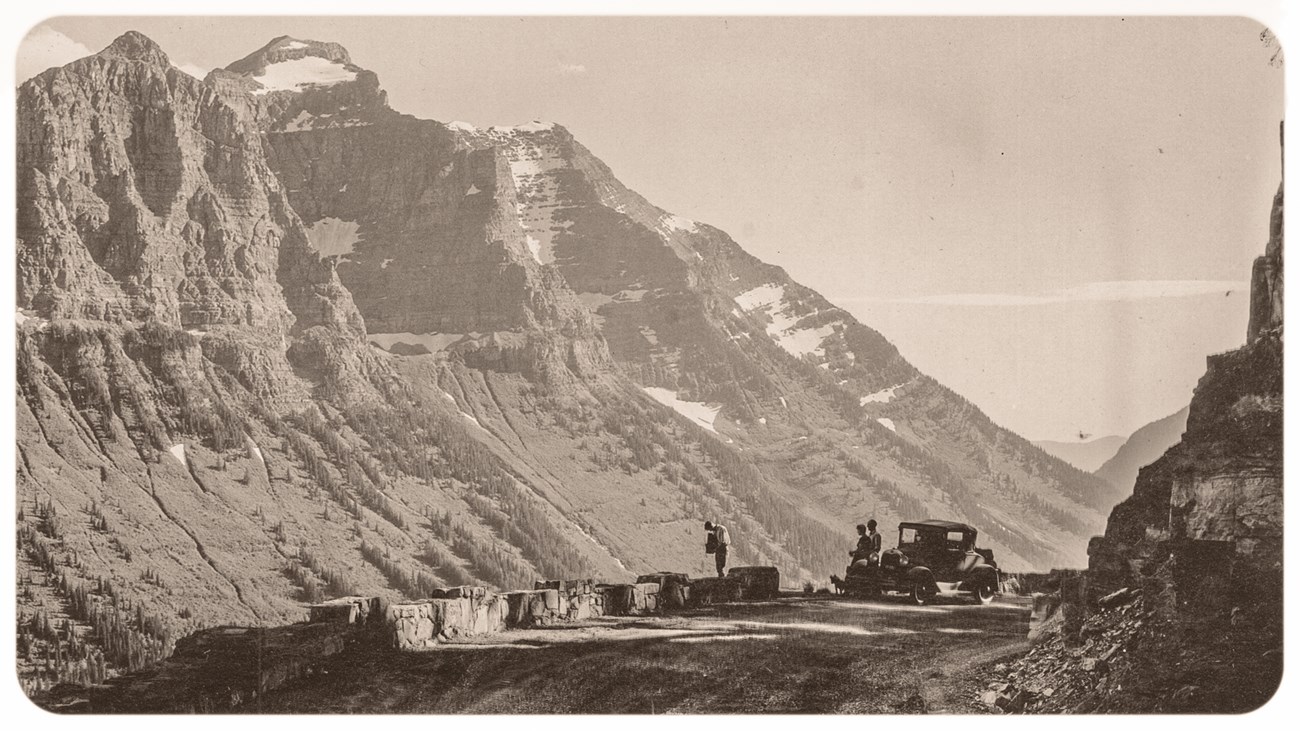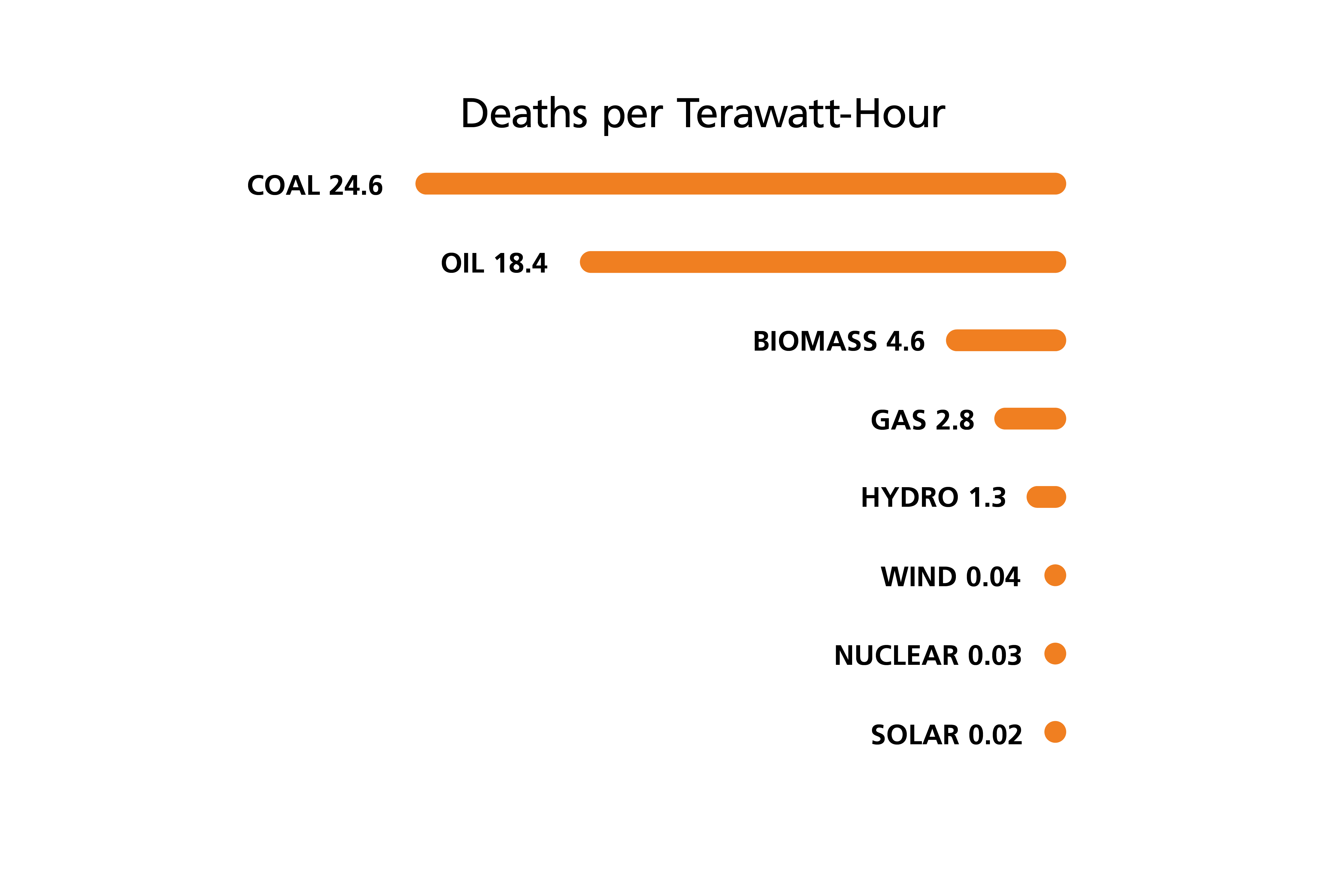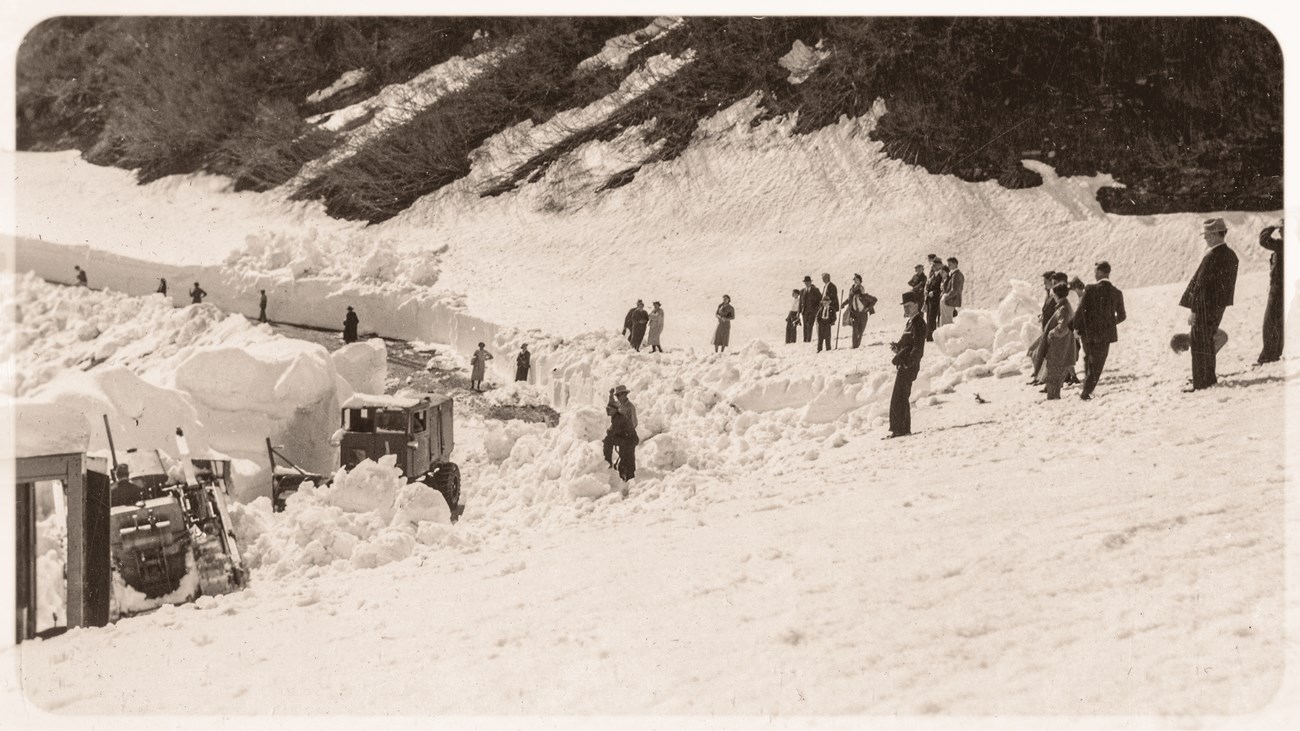Part of a series of articles titled Climate & History at Glacier National Park.
Article
Global Warming: Solutions & Benefits at Glacier National Park

This image was taken by George Grant in 1932 just before Going-to-the-Sun Road was completed. The Ford Model-A parked along the road probably had a fuel efficiency between 10 and 20 miles per gallon.
Burning fossil fuels is often the only choice for traveling to Logan Pass.
That is the way it has been since Going-to-the-Sun Road first opened in 1933. For over a century, fossil fuels have taken us wherever we wanted to go.
Though unintended, burning these fuels releases greenhouse gases that warm the climate. Limiting this warming requires shifting away from fossil fuels. Besides mitigating climate change there are many other benefits to this transition. Electric vehicles and appliances powered by renewable energy are more efficient, quieter, and safer. Fossil fuels may have been your only choice today, but alternatives–and their side benefits–are quickly becoming widespread.
One side benefit to this energy transition is the extension of human life. The same energy sources that emit the least greenhouse gases are also the least harmful to people.

This graph was adapted from Our World in Data, Richie, (2020) and Markandya & Wilkinson (2007); Sovacool et al. (2016); UNSCEAR (2008; & 2018). Death rates are calculated using fatalities from accidents and air pollution per terawatt-hour of electricity.
Death rates are calculated using fatalities from accidents and air pollution per terawatt-hour of electricity generated. That means, on average, 24.6 people die from air pollution and accidents derived from coal combustion. 18.4 people from burning oil. Electricity produced by hydropower, wind, nuclear, and solar result in far fewer deaths.
For these reasons and more, Glacier National Park has already begun an effort to reduce its greenhouse gas emissions from fossil fuels. From Polebridge and Goat Haunt to the Apgar Visitor Center and park headquarters Glacier is transitioning to renewable sources of energy throughout the park.
This includes managing the Logan Pass visitor center as a model for off-grid sustainability. This area obtains all its electricity from solar panels, mostly tucked out of view.
Glacier National Park’s goal is to be a leader in understanding, communicating, and responding to climate change.
Improvements to Glacier's recycling program are being made. More efficient LEDs are replacing energy-wasting light bulbs. Glacier’s employees can reduce their own carbon emissions by riding the employee shuttle or biking to work. A few more specifics are listed below.
- The Logan Pass Visitor Center obtains electricity from solar panels.
- The Apgar Visitor Center also uses rooftop solar panels.
- The Polebridge Ranger Station has three large photovoltaic arrays.
- Goat Haunt uses a micro-hydroelectric power plant.
- The park has a campaign to reduce unnecessary idling.
- The local availability of recycling services is extremely limited.
- Glacier recycles everything that the local market accepts.
The Uphill Struggle
Just because the benefits are significant does not mean this transition away from fossil fuels will be easy. For some sectors and industries, fossil fuel free solutions are only just emerging. What parts of your life would be easiest, and most difficult, to transition away from fossil fuels?
This image was taken by an unknown photographer in 1938, showing that the literal uphill battle of plowing snow off Going-to-the-Sun Road has been a much-watched harbinger of spring here for nearly a century.
Rising temperatures from a warming climate have meant less snowpack. Over the past 80 years, western Montana and the Pacific Northwest have seen drastic declines in snowpack volume.
The snowpack this winter (2023-2024) reflects that broader trend. In Many Glacier, the snow-water-equivalent was measured at 26% of average on February 13th. On the west side of the park, measurements are around 75% of average.
One dry winter is not necessarily because of climate change, however, the trend is expected to continue unless climate change is swiftly addressed.
The information in this article is featured in exhibits outside the Logan Pass Visitor Center. Check the exhibits out for yourself next time you visit!
Griffith, Saul. “Rewiring America: A Field Manual for the Climate Fight.” Rewiring America, July 2020. https://www.rewiringamerica.org/handbook. Pp. 1. “The technical path to decarbonization is simply this: we must electrify (nearly) everything. We need a near 100% adoption rate of decarbonized solutions. It is the big purchases that count far more than the little ones. Your next car needs to be electric, your next furnace a heat pump, and you need solar on your roof. This is your personal zero– carbon infrastructure.” Pp. 35. “When we replace everything in our lives with electricity, cars will be zippier, the air in our cities, suburbs, and homes will be cleaner, our appliances will be better, the streets will be quieter, and our carbon–consciences will be clear.”
Hawken, Paul, ed. Drawdown: The Most Comprehensive Plan Ever Proposed to Reverse Global Warming, 2017. https://drawdown.org/solutions/electric-cars “If electric car ownership rises to 16-23 percent of total passenger km at a first cost of $4.5-5.8 trillion, by 2050, 11.9-15.7 gigatons of carbon dioxide from fuel combustion could be avoided as well as $15.3-21.8 trillion in fuel costs. Our analysis accounts for emissions from electricity generation and higher emissions of producing electric cars compared to internal-combustion cars. Compared to gasoline-powered vehicles, emissions drop by 50 percent if an EV’s power comes off the conventional grid. If powered by solar energy, carbon dioxide emissions fall by 95 percent. The “fuel” for electric cars is cheaper too. EVs… have fewer moving parts, and require little maintenance and no fossil fuels. Typical today is a range of 80 to 90 miles, long enough for most daily travel.”
Richie, Hannah. Our World in Data, “What are the safest and cleanest sources of energy.” (2020) and Markandya & Wilkinson (2007); Sovacool et al. (2016); UNSCEAR (2008; & 2018). https://ourworldindata.org/safest-sources-of-energy “Fossil fuels are the dirtiest and most dangerous energy sources, while nuclear and modern renewable energy sources are vastly safer and cleaner. The differences are huge.
”Sivak, Michael. Schoettle, Brandon. University of Michigan Transportation Research Institute. “On-Road Fuel Economy of Vehicles in the United States 1923-2013. August 2015. “Fuel economy decreased from 14.0 mpg in 1923 to 11.9 mpg in 1973. Starting in 1974, fuel economy increased rapidly to 16.9 mpg in 1991. Thereafter, improvements have been small, with fuel economy in 2013 at 17.6 mpg.”
Last updated: October 10, 2024
